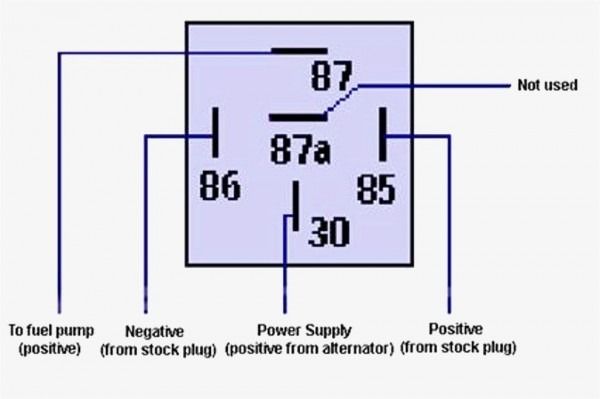For anyone new to automotive or electrical projects, understanding a 5 pin relay socket is an essential first step. This small but powerful component acts as the foundation for connecting a 5 pin relay, making wiring easier, safer, and more reliable. Instead of struggling with loose wires, a relay socket provides a stable base with clearly marked terminals, helping beginners avoid common mistakes. Whether you’re working on car lights, motors, or DIY electronics, learning how a 5 pin relay socket works will give you the confidence to design circuits that are both functional and professional.
What is a 5 Pin Relay Socket?
A 5 pin relay socket is a connector base designed to hold and connect a 5 pin relay. Instead of soldering wires directly to the relay, you plug the relay into the socket and connect wires to the socket terminals.
Benefits of using relay sockets:
Easy installation and replacement of relays
Secure and stable wiring connection
Protection against loose connections or overheating
Organized wiring in automotive and industrial panels

The socket typically has 5 terminals:
85 and 86 → Coil terminals (control side)
30 → Common terminal
87 → Normally Open (NO) contact
87a → Normally Closed (NC) contact
This makes the 5 pin relay versatile, as it can switch between two circuits depending on the relay state.
How Does a 5 Pin Relay Work?
A 5-pin relay is a Single Pole Double Throw (SPDT) switch controlled by an electromagnet. When no power is applied to the coil (pins 85 and 86), the common terminal (30) connects to the Normally Closed (87a) contact, allowing current to flow there.
When the coil is energized, a magnetic field pulls the internal armature, switching the connection so that 30 links to the Normally Open (87) contact instead.
This design lets one circuit be active when the relay is off and another when it is on, making 5-pin relays useful for switching between two outputs, fail-safe setups, or controlling devices like lights, fans, or pumps in automotive and industrial applications.
How to Wire a 5-Pin Relay Socket
Here’s the standard wiring guide:
Pin 85: Ground for the coil
Pin 86: Positive trigger signal (from switch or ECU)
Pin 30: Power input (from battery or power supply)
Pin 87: Output to the device (active when relay is energized)
Pin 87a: Output to an alternate device (active when relay is OFF)
Tip: Always use a fuse between the power source and relay socket to protect the circuit.
Applications of 5 Pin Relay Sockets
5 pin relay sockets are versatile and widely used in multiple fields:
Automotive Applications
Headlights, fog lights, and auxiliary lighting
Fuel pumps and cooling fans
Power windows and central locking systems
Car alarms and security systems
Industrial Applications
Motor and pump control
Automation panels
Switching between backup power sources
Heating and cooling equipment
Home and DIY Projects
Home automation systems
Solar power setups
Smart lighting control
Security alarm systems
How to Choose the Right 5 Pin Relay Socket
When selecting a relay socket, consider the following factors:
Current Rating – Match the socket to the relay’s current handling (commonly 30A or 40A in automotive use).
Material Quality – Look for heat-resistant plastic and copper or brass contacts for durability.
Wiring Harness – Many sockets come pre-wired with color-coded cables for easy installation.
Mounting Options – Check if the socket supports panel mounting, DIN rail, or free wiring.
Compatibility – Ensure it matches standard ISO mini relays used in automotive and industrial setups.
Common Problems and Troubleshooting
Loose Connections: Can cause overheating → always check socket grip.
Corrosion: Moisture exposure may cause poor contact → use sealed sockets in wet environments.
Overcurrent: Relay or socket burns out if not rated properly → always check amperage rating.
Wrong Wiring: Leads to device malfunction → follow wiring diagrams carefully.
Frequently Asked Questions (FAQ)
Q1: Can I use a 5 pin relay in place of a 4 pin relay?
Yes, if you only use pins 30, 85, 86, and 87, it works like a 4 pin relay.
Q2: What is the typical current rating of a 5 pin relay socket?
Most are rated for 30A to 40A, suitable for automotive and industrial loads.
Q3: Do I need a socket to use a relay?
Not strictly, but using a socket makes installation safer, cleaner, and easier for replacement.
Q4: Can I wire multiple sockets together?
Yes, sockets can be grouped using modular blocks for complex circuits.
Conclusion
The 5 pin relay socket is an essential component for anyone working with automotive electronics, industrial automation, or DIY electrical projects. Its ability to switch between two circuits makes it more versatile than a 4 pin relay, and using a socket ensures safer, cleaner, and more reliable wiring.
By understanding how it works, learning proper wiring methods, and selecting the right quality socket, you’ll be able to confidently use 5 pin relay sockets in any application.
Related content recommendations

Top 10 Relay Socket Manufacturers in the World 2025
In the modern electronics and electrical industries, relay sockets serve as a crucial bridge connecting relays to control systems. With

China’s 10 Leading Relay Suppliers You Should Know in 2025
China’s relay industry has become a global force, powering everything from EVs to factory automation. But with so many

What is a Relay Socket? Definition, Types, and Uses
Imagine you’re troubleshooting a complex electrical system—say, in a car or a factory control panel—and you need to swap out

Relay Socket Price Guide 2025: How Much Do They Cost?
Have you ever wondered, “How much should I pay for a relay socket?” When seeking the ideal balance between quality

